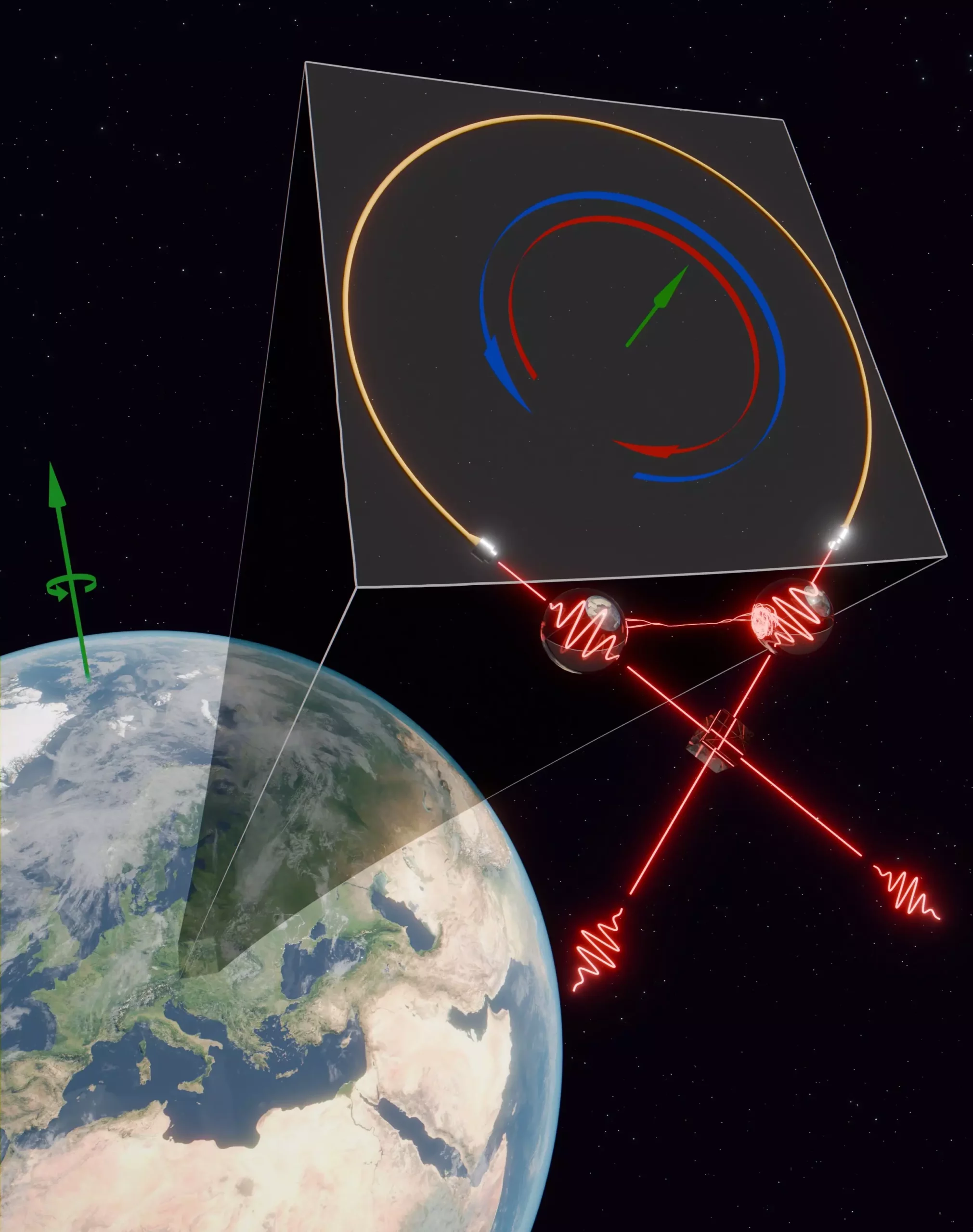In a groundbreaking experiment led by Philip Walther at the University of Vienna, a team of researchers delved into the effects of Earth’s rotation on quantum entangled photons. Reported in Science Advances, this research represents a significant leap in rotation sensitivity within entanglement-based sensors, paving the way for advancements at the crossroads of quantum mechanics and general relativity.
Traditional optical Sagnac interferometers have long been regarded as the ultimate tools for measuring rotational speeds due to their unparalleled precision. However, their capabilities are limited by the constraints of classical physics. Quantum entanglement introduces a new realm of possibilities, allowing for increased information per measurement by leveraging entangled particles. Despite the potential for enhanced sensitivity, the delicate nature of entanglement has presented challenges in achieving this goal.
The researchers at the University of Vienna devised a colossal optical fiber Sagnac interferometer that maintained low and stable noise levels for extended periods. This meticulous approach enabled the detection of high-quality entangled photon pairs, surpassing the rotation precision of previous quantum optical Sagnac interferometers by a staggering thousandfold. By leveraging the unique properties of entanglement, the experiment unlocked the phenomenon of super-resolution, where entangled particles behave as a single entity experiencing both directions simultaneously within the interferometer.
One of the primary obstacles faced by the researchers was isolating Earth’s rotational signal within the experiment. To mitigate this influence, they implemented a clever workaround by incorporating an optical switch to cancel out the rotation signal at will. This innovative approach not only facilitated the observation of Earth’s rotation on a maximally entangled two-photon state but also extended the stability and reliability of their experimental setup. By effectively tricking light into a non-rotating universe, the researchers achieved unprecedented precision in their measurements.
The results of this experiment mark a significant milestone in the realm of quantum entanglement and rotation sensitivity. With a thousandfold improvement in precision compared to previous experiments, this research confirms the intricate interplay between rotating reference systems and quantum entanglement, as envisioned in Einstein’s special theory of relativity and quantum mechanics. As Haocun Yu, a Marie-Curie Postdoctoral Fellow involved in the study, aptly puts it, “The entanglement of individual quanta of light has finally entered the same sensitivity regimes as observations of Earth’s rotation with light a century ago.”
The success of this experiment not only opens new avenues for enhancing the rotation sensitivity of entanglement-based sensors but also lays the foundation for future experiments probing the behavior of quantum entanglement within the intricate fabric of spacetime. Philip Walther, the lead researcher on this project, believes that this achievement will spark further advancements in the field, potentially leading to groundbreaking discoveries in the realms of quantum mechanics and general relativity.



Leave a Reply